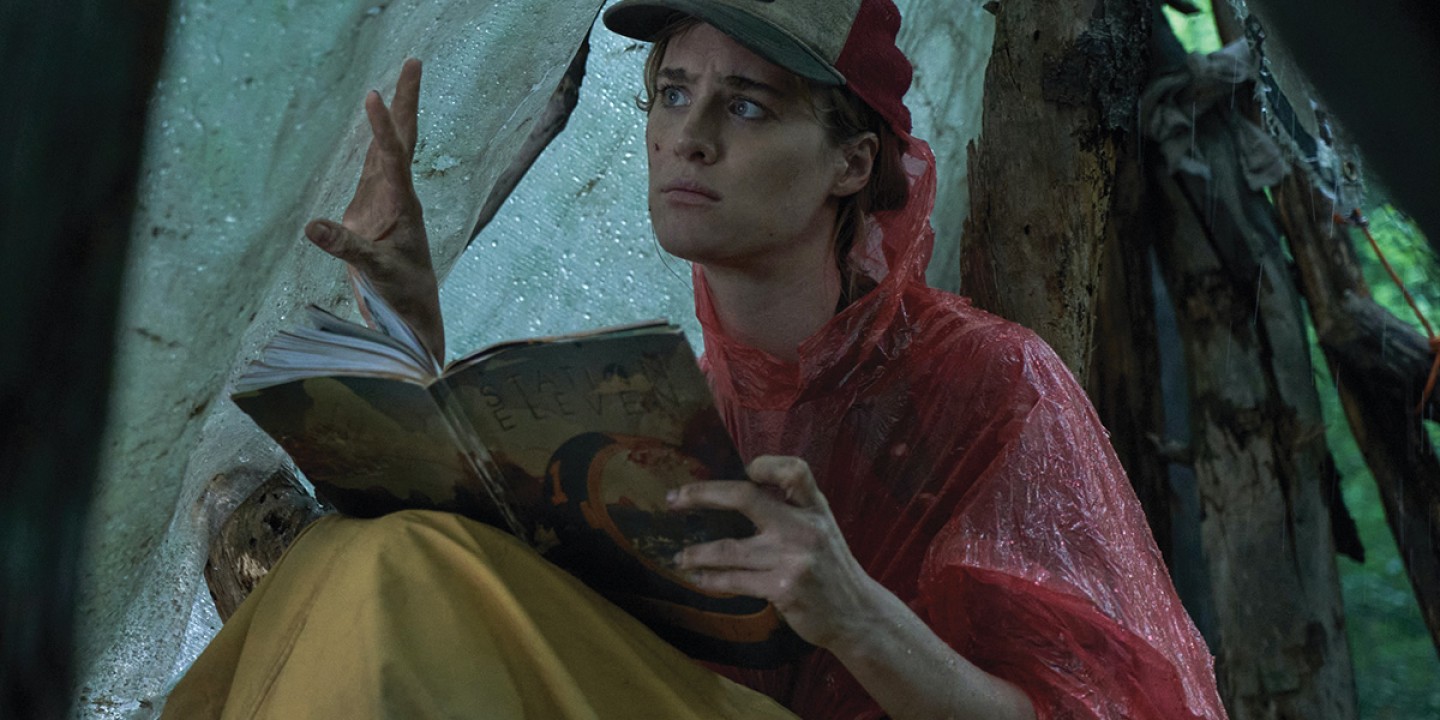Station Eleven and the purpose of art
With the world as they knew it gone, the characters remake the world from the resources they carry inside them.

I love Emily St. John Mandel’s 2014 apocalyptic novel Station Eleven, and I waited eagerly for the recent HBO limited-series adaptation. Mandel’s meditation on the meaning of art in a society ripped apart by loss is ripe for our cultural moment. Although the show rewrites key character arcs and plotlines, it achieves its own beauty and coherence, embodying Mandel’s point about the importance of art adapting to the circumstances of the moment.
The story is set 20 years after a global flu pandemic kills 99 percent of the world’s population. A band of actors and musicians called the Traveling Symphony walk around Lake Michigan in a yearly circuit, performing Shakespeare and giving concerts to the small communities that have reconstituted themselves in the post-pandemic world. They live by the motto “Because survival is insufficient.” With the world as they knew it gone, they make art from the resources they carry inside them: plays and music they’ve committed to memory, a slogan repurposed from a Star Trek episode. Out of these glowing coals they build fires—both heat and light—around which new forms of human community can be imagined beyond the tasks of biological continuity.
Read our latest issue or browse back issues.
The central work of art in the show is a graphic novel, also called Station Eleven, about an astronaut lost in space. Kirsten Raymonde (Mackenzie Davis), an actor in the Traveling Symphony, has carried the book with her since the pandemic began. Its language and images, which we hear and see only in snatches, structure her inner life profoundly. Her copy is one of few in existence, a private gift from a dear friend from the before times, so it seems both improbable and eerie when she meets a mysterious young man who calls himself the Prophet (Daniel Zovatto) and seems to know Station Eleven.
The story moves between the present and flashbacks to the first year of the pandemic and before. We watch as the graphic novel is created, and we see what it cost the author to make it. We see the accidents of chance and the networks of relationships by which it finds its various homes with those who cling to it as the world falls apart.
Kirsten recognizes a shared world with the Prophet because of this work of art. But she is baffled by how differently they interpret what Station Eleven means for the present. This becomes a central question in the show: Does art exist to preserve the past or to change the future? In the novel, the art the Traveling Symphony makes is almost a stopgap measure, as though with enough time human culture will again lead from Shakespeare to electricity to unbroken global supply lines. There is a wistfulness about the lost world of ease and plenty and a sense that the survivors at least aspire to re-create it. If we can hold on to art, the novel suggests, maybe we can get the rest back, too.
The television show turns this into a somewhat different question, one with ethical dimensions: Should we cling to the creature comforts of the past if they come with hierarchies, power struggles, and the desire to police the abundance of the world against perceived threats from strangers and outsiders? The tension in the show is between people who think differently about this question—those who want to preserve the past or re-create it if they can and those who insist that there is no valuable past and want to destroy everything that came before.
Kirsten straddles these two desires; she’s both a rare child who survived the pandemic and a leader in a troupe of artists tasked with keeping alive a lost heritage. As she begins to see how her life is connected to a wider web of people, her relationship to her own art changes. The ability to remake the world without further destroying it, she learns, has little to do with art explicitly and everything to do with human care and connection. What made the difference between surviving and flourishing or not was not the graphic novel she clung to but the simple fact of having another person truly care for her.
For years, I have carried an image from the novel—a woman humming a song she heard the Traveling Symphony play, a song that imbued all the mundane tasks of her daily survival with a flush of new life—as a strange but wonderful defense of the arts and humanities. She does not need the song to survive, but it gives her a sense of meaning beyond what she has lost. When I feel besieged by the way we are pushing our planet to the brink of uninhabitability and troubled by my private terror that reading and writing offer little to forestall the various catastrophes unfolding around us, I think of this humming. “We can only remake the world with what is inside us,” I tell myself. Explicitly and implicitly, I tell my students, “One day—every day—you will have to remake the world with what is inside you.”
Two years into a real global pandemic, however, as the fissure lines of our social cohesion widen by the day and our pandemic body count keeps rising, I needed the revisions the show provides. Now I have a new image to carry with me: Kirsten staring in amazement as the circle of care and connection that tied her life to Station Eleven comes around unbroken, giving her back what she thought she had lost. Art, she realizes, is neither preservation nor destruction. It is a relationship of care connecting us to others like and unlike us across time and space. And care is a form of art, helping us remake the world with all the remembered and half-forgotten resources inside us.
A version of this article appears in the print edition under the title “Care as an art form.”







